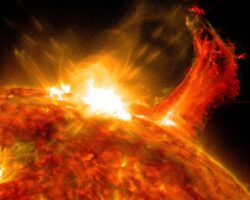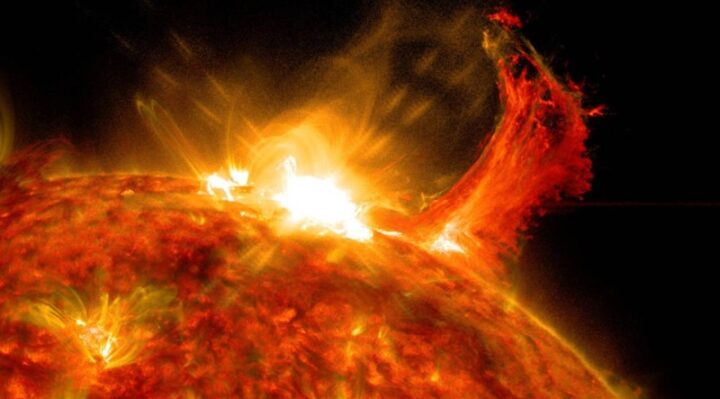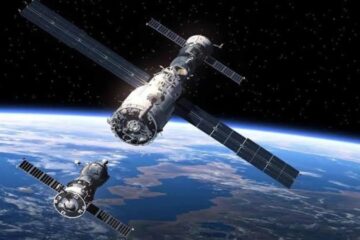165 years ago, Earth was hit by the largest solar storm in history, hidden in trees


This study opens the door for improved preparation against upcoming geomagnetic storms while also providing insight into the effects of one of the biggest solar storms ever observed.
Because of their lifetime, trees not only serve as historical witnesses, but they also keep documents, and scientists are now studying them to learn more about the behavior of the Sun.
Analysis of radiocarbon concentrations in Lapland tree rings has helped scientists gain a better understanding of solar storms, including the famous Carrington Event of 1859.
This study not only explains the consequences of one of the strongest solar storms ever observed, but it also opens the door to improved readiness for similar events in the future.
Scientists were interested by the Carrington Event for a long time because of its bright aurora and delay to telegraph systems around the world. But up until now, there hasn’t been much opportunity to use radiocarbon dating to examine storms of this scale that are medium in size.
This joint project from the University of Helsinki, Natural Resources Institute Finland, and the University of Oulu provides a new way to look into solar storm frequencies and their effects on Earth since it is the first time an increase in radiocarbon concentrations after the Carrington storm has been found in tree rings.
Aurorae and other phenomena are caused by interactions between solar plasma flows and Earth’s geomagnetic field, which result in solar storms. These storms’ high-energy particles have the potential to create radiocarbon (14C) in the upper atmosphere, which later reaches plants through photosynthesis and leaves traces in trees’ annual rings.
Through the examination of these rings, scientists may investigate and retrace previous solar events.
The director of the Laboratory of Chronology at the University of Helsinki, Markku Oinonen, highlights the significance of radiocarbon as a cosmic marker that records events related to Earth, the solar system, and space travel.
Understanding solar behavior and its possible effects on modern technology, such as satellites, mobile and electrical networks, and navigation systems, depends on this discovery.
The results was analyzed using a dynamic atmospheric carbon transport model created by University of Oulu researchers, highlighting local variations in radiocarbon distribution.
The results counter earlier theories regarding the movement of the extra radiocarbon from the Carrington Event, indicating that it was mainly carried to the lower atmosphere through northern regions.


